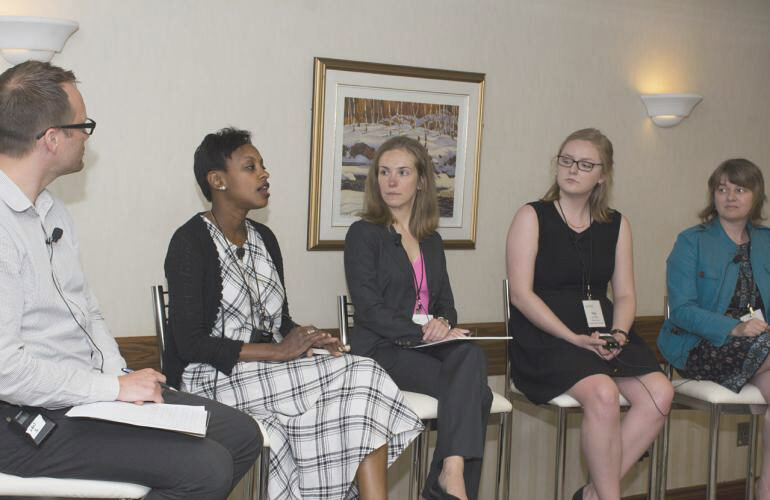During diTHINK, nearly 200 attendees representing Ontario’s research, education and innovation industry gathered to engage in the kind of conversations that can help move Ontario’s innovation economy forward. From customized learning to connected communities to advanced computing, here’s what we learned.
How do we, as educators in an age of digital citizenship, leverage the tools to create the most inclusive and accessible learning environments? Panellists explored best practices in customized learning.
Karen Louise Smith spoke about the evolution of K-12 makerspaces – from early concepts in the 1970s favouring DIY mechanics, to where we are today in experiential learning frameworks. Popping up in community hubs like libraries, and even museums, experiential learning goes to where the community is already gathered. Learning goes beyond the classroom walls and class schedules. Today, the idea of “maker” extends far beyond a kit you can buy at the toy store to a ground-breaking approach to discovery – tinkering and exploring are the buzzwords of the modern maker.
Polly van Herpt shared a student trustee’s perspective, voicing the fact that more student advocacy is needed to shape education. For example, tech presented in a classroom can either be rejected or embraced, but student surveys are useful because they give enough runway to receive the spectrum of student feedback.
Rhonda McEwan opened up the conversation to reveal how technology can enable greater accessibility to learners with special needs or gifts. For example, tablets and devices can be a very effective learning tool for students with cognitive defects. In her research, Rhonda, who is currently studying math apps as a self-directed learning tool found that educators and students need to focus on learning with the aid of these tools, rather than focusing on the tech itself “like expensive flash cards.”
Moderator Joseph Wilson transitioned the conversation by asking panellists how efficient edtech really is, given the cost spent on the technology.
Elizabeth Steiner responded to this question, based on research from a RAND study on personalized learning: no one solution fits all. In fact, the Bill and Melinda Gates Foundation discovered that the common thread between personalized learning programs was to understand the needs and goals of the learners, then tailoring the program accordingly. The result? Students in personalized learning schools performed well in math and reading. The challenge we are left with, then, is to share best practices with each other. To that end, we were inspired by groups like Hive that facilitate such meetings and open the possibility for interdisciplinary networking.


